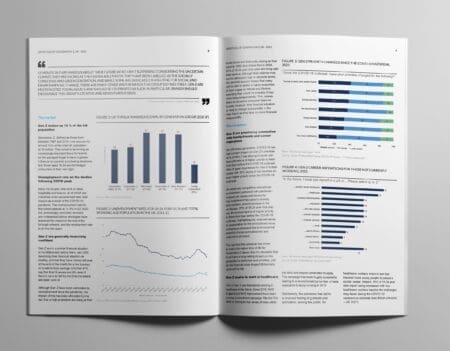Many of us will have memories of scribbling a list of things we wished to get for Christmas onto a piece of paper and putting it by the chimney in the hope that it would reach Father Christmas, but today’s children have a new high-tech way to reach the man himself.
Christmas seasonal selling is hugely important for toy retailers. Mintel’s research has revealed that 44% of Brits bought toys and games (not including video games) as gifts for Christmas last year, up from 41% in 2012. As expected, toys are enormously popular in households with children, with the figure rising to 84% among families with children aged 0-4 and 85% with those aged 5-9. On average Brits spent £85 on toys and games in 2013.
12% of UK consumers say they like to take the children shopping and let them choose a toy within a certain price range
Multi-channel retailer Argos has created a wish list app that provides a fun way for children to choose the presents they’d like to receive, using a device that they as a generation are familiar with. And though using an electronic device may seem a step away from the old-fashioned letter to Santa Claus, it has been designed in such a way so as to retain the tradition and bring it into the modern age.
Wish lists, first made popular by Amazon, are being offered more widely and are a valuable tool for encouraging the gift buyer to buy from the same source. Wish lists must fulfil the dual role of appealing to their target audience and making purchasing easy. Argos aims to meet these roles with its new innovative wish list app, that came about after proprietary research showed that one in five under-10s circle items in the hard copy Argos catalogue, to show their parents what they’d most like for Christmas. The move builds further on Argos’s well-developed multi-channel offering.
Mintel is expecting a good December – forecasting retail sales growth of 3% – and toy retail market leader, Argos (with its 15% share), should be a key beneficiary, aided by the convenience of its multi-channel format and its innovative ways to reach the digital generation.
The intuitive app is aimed at children aged 3-7, and includes the retailer’s full 3,000-strong toy range. While Argos’ wish list app is naturally up against Amazon’s Wish List feature, the former is designed with children in mind thus giving it a unique selling point. The user picks a cartoon character “helper” from a choice of five, named Mo, Stik, Gil, Squidge and Fly, and adds a photograph of themselves. They can decorate the lists with “stickers” and a drawing tool and then email it to the North Pole.
Parents can set limitations on price and set “Santa’s email address” as their own to receive a copy. That email then links straight through to the Argos e-commerce channel.
Although this app is a clever and innovative way to bring a tradition into modern times by directly appealing to the digital generation, it seems a shame that despite emulating the concept of a letter to Santa, he doesn’t feature in the app in any way, with no graphics or images.
Mintel data shows that in the fast-moving toy market, where it is hard to keep up with the latest “must have” toy, parents are keen to get input from their children about what to buy, whether during or before a shopping trip. The children are the experts here. Some 15% of UK consumers who have bought toys or games for under 16s say that what the child says they want in the shop determines what they buy. A further 12% say they like to take the children shopping and let them choose a toy within a certain price range and 8% like to let their child choose toys within a certain price range in advance of shopping.
It isn’t just children that Argos are catering for, however. They have further demonstrated their digital prowess with the launch of an adult’s wish list app using “swipe-to-like” technology, inspired by the Tinder online dating app. The swipe-to-like functionality suggests gifts to customers based on what they have already liked. Each like and dislike makes the filtering system more accurate. To support the app Argos has also launched a social Facebook game, ‘Friend or Fraud’, where users log in with their profile to build their own wish list and invite their friends to test how well they know them by guessing their selection by swiping right or left.
The next step for Argos could be to develop the app further, for example by tying it in with a game, with the objective of earning points towards a discount or free gift. They could also bring in partner companies offering other items or treats children might request, such as restaurant and leisure venues, like cinemas and ice skating venues, to offer a wider range of possibilities as children’s wish lists get more imaginative and extravagant than ever before.








































